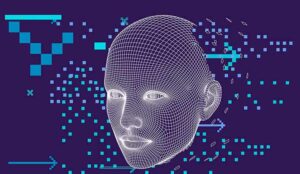This year’s National Customer Service Week begins on Monday 3rd October. As always it provides an opportunity to focus on the whole topic of customer service to demonstrate its importance to organisational success, and to recognise the efforts and skills of everyone across the industry.
One of the key themes for this year is the human–tech interface. Essentially how can organisations best use human agents and digital technology to meet customer needs? The key point is achieving a balance – bringing together the best of both worlds. For example,
- Digital technologies, such as chatbots or self-service, enable customers to get fast answers to routine queries 24×7
- Human agents, supported by technology, can use softer skills such as empathy to understand more complex problems and deliver reassurance and solutions to meet customer needs on channels such as the telephone.
Companies need to integrate both types of service so that customers can access the best channel and approach for their current situation.
Here are four areas where the integration between human agents and digital technology delivers particular benefits:
1. Real-Time Speech Analytics (RTSA)
Agents have a lot to do when on a phone call to a customer. They need to build a rapport, solve problems, and meet internal and external compliance regulations.
Callers might be upset or angry, adding to stress levels. It is therefore easy for agents to feel overwhelmed or unsupported, and potentially miss out information when speaking to customers. Real-time speech analytics technology helps address these issues.
By automatically analysing the conversation as it happens, RTSA can flag problems (such as pauses, raised voices or particular words) to supervisors.
This allows them to step in and help. It can also prompt agents with information, such as terms and conditions, that needs to be provided for compliance reasons.
2. Chatbots
We’ve all seen how chatbots can deliver fast, effective answers to routine queries. However, using the latest technology means they can deliver even greater value.
For example, they can carry out security verification processes and allow customers to get access to personalised account information, extending their scope. They can automatically detect where a customer is based, and switch to their preferred language, delivering translated answers.
What is vital for high-quality customer service is to understand that chatbots won’t be able to answer every query.
It therefore needs to be easy for customers to escalate from them to other channels. This could be offering a phone call or chat session with a human agent, and then arming the agent with the chatbot conversation so they are completely up-to-speed.
3. Quality Monitoring and Agent Improvement
As well as providing real-time support for agents on the phone, technology also helps them improve and learn. Previously, supervisors had to manually read through transcripts of calls to identify best practice or areas where agents could improve.
This meant they simply did not have time to check every interaction, leading to potential inconsistencies. However, AI-based solutions can now automatically scan every interaction, on every channel, and use this to flag particular conversations which contain trainable moments.
The result is a more comprehensive approach that helps agents improve and gives companies a much more complete view of quality. This ensures that agents are performing at their best when engaging with customers.
4. Making Knowledge Part of Every Interaction
The range of questions that customers ask is ever-increasing and changing, making it impossible for agents to easily remember the answer to every one of them. Introducing an AI-powered knowledge base delivers the support that both agents and customers need to ensure fast, consistent answers.
Agents can ask questions in plain English and automatically get the information they require, boosting efficiency and customer satisfaction. But it is vital to involve agents in the entire knowledge management process.
This starts with getting their input when collecting knowledge, and then making it easy for them to provide feedback on any gaps in knowledge when it is being used. Voice of the Customer programmes can also identify where customers require more information.
This mix of human and machine capabilities optimises the knowledge base and ensures it is continually expanding and improving.
This blog post has been re-published by kind permission of Enghouse Interactive – View the Original Article
For more information about Enghouse Interactive - visit the Enghouse Interactive Website
Call Centre Helper is not responsible for the content of these guest blog posts. The opinions expressed in this article are those of the author, and do not necessarily reflect those of Call Centre Helper.
Author: Enghouse Interactive
Published On: 29th Sep 2022
Read more about - Guest Blogs, Enghouse Interactive






 Enghouse Interactive delivers technology and expertise to help bring your customers closer to your business through its wide range of customer contact solutions.
Enghouse Interactive delivers technology and expertise to help bring your customers closer to your business through its wide range of customer contact solutions. 








